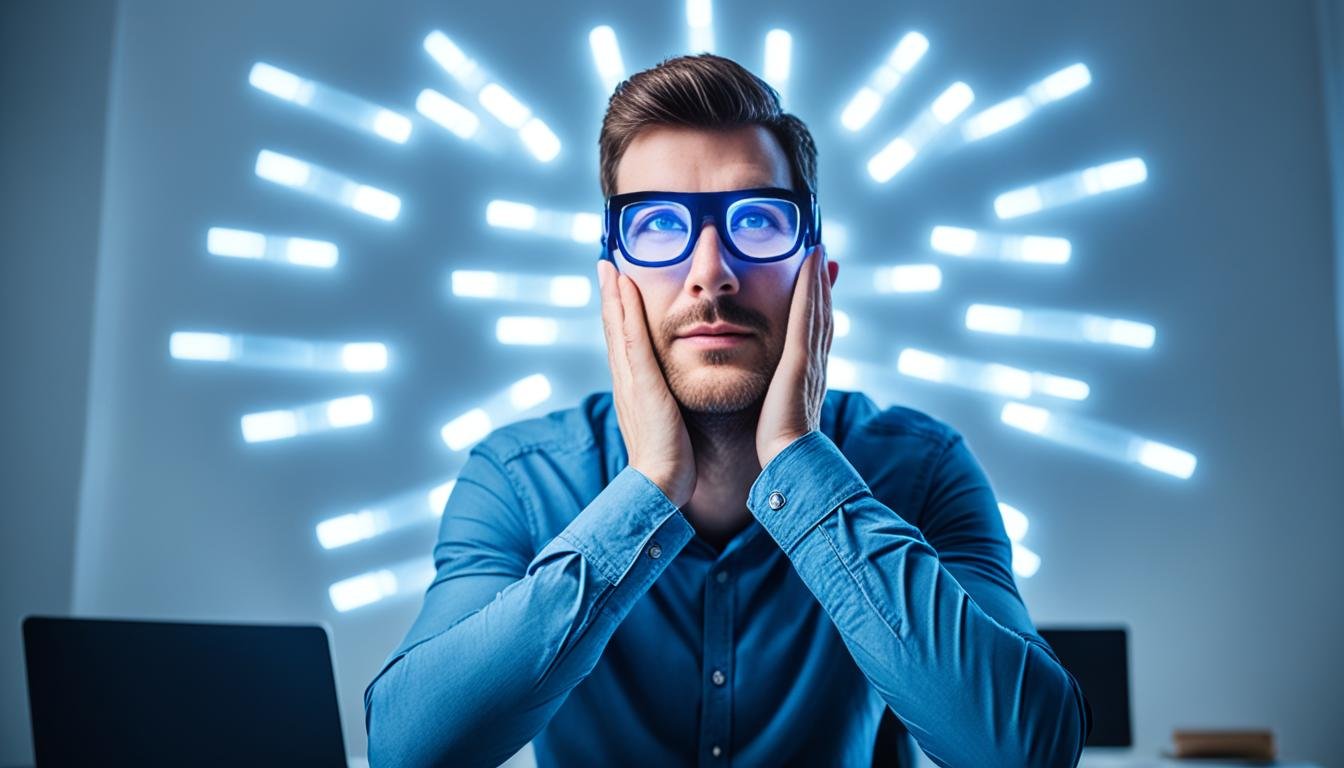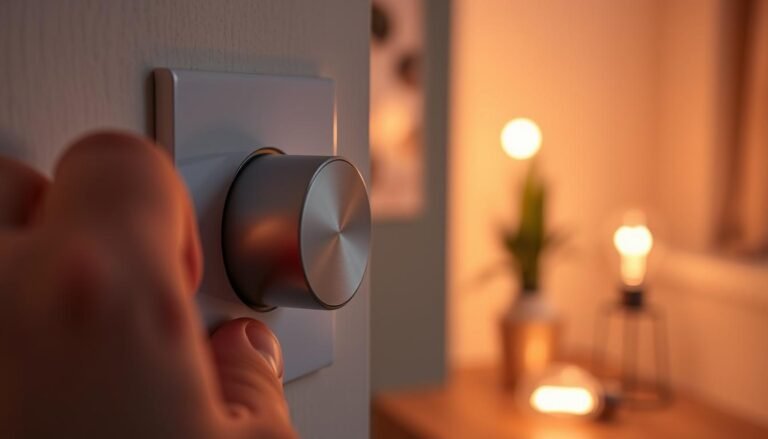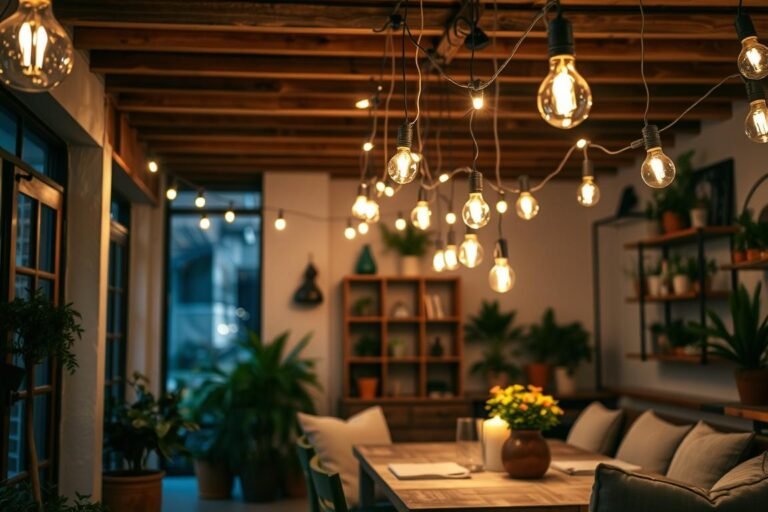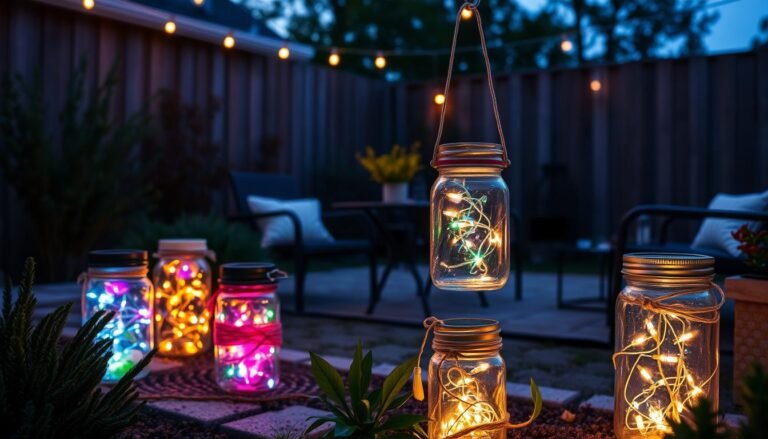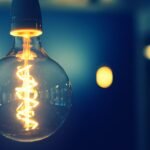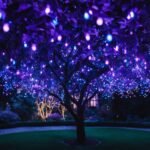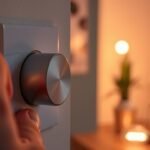Affiliate Disclosure: This post may contain affiliate links. If you make a purchase, we may earn a small commission at no extra cost to you.
In our modern world, LED lights surround us everywhere. From the screens of our smartphones and computers to the lighting in our homes and offices, LED technology has become an integral part of our daily lives. However, with the increasing prevalence of LED lights, concerns have emerged about their potential impact on our eye health.
Are LED lights bad for your eyes?
Let’s explore the facts and find out.
Many people worry that the blue light emitted by LED lights can harm our eyes. With this in mind, it’s important to understand the sources and effects of blue light on our visual wellness.
Additionally, debunking common myths and addressing misconceptions about LED lights is essential to make informed decisions about protecting our eyes in the digital age. Let’s delve deeper into this topic and discover the truth.
Key Takeaways:
- LED lights have become a ubiquitous presence in our daily lives.
- There are concerns about the potential harm LED lights may cause to our eyes.
- Blue light emitted by LED lights is a major focus of attention.
- Understanding the sources and effects of blue light on eye health is crucial.
- We will address common myths and misconceptions about LED lights and eye health.
Understanding Blue Light and Its Sources
Blue light is a kind of light that’s similar to ultraviolet light but is visible to the human eye. It comes from natural sources like the sun and artificial sources like LED screens.
What Is Blue Light?
Blue light is a type of light that has a shorter wavelength and more energy than other colors we can see. It’s mostly blue but can also have a little green or violet in it. Blue light is important for our bodies because it helps us know when to wake up and when to sleep, which is called our sleep-wake cycle.
Natural Sources vs Artificial Sources of Blue Light
The sun gives off all kinds of light, including blue light. But things like LED screens and lights make more blue light than natural sources do. Since we use LED technology a lot these days, we’re exposed to more artificial blue light.
The Pervasiveness of LED Technology
LED technology is everywhere nowadays, powering things like our phones, computers, and even streetlights. LEDs are popular because they save energy and last a long time. But some people worry that using them too much might not be good for our eyes.
Blue Light and Its Impact on Sleep Patterns
How Blue Light Affects Circadian Rhythms
Blue light helps our bodies know when it’s time to be awake and when it’s time to sleep. But when we use screens that emit blue light, especially at night, it can mess up our sleep. That’s because it tricks our bodies into thinking it’s still daytime, making it hard to fall asleep and stay asleep.
Practical Tips for Reducing Blue Light Exposure Before Bed
To promote better sleep quality, it is important to reduce our exposure to blue light in the hours leading up to bedtime. Here are some practical tips to help you reduce blue light exposure:
- Dim the lights in your home as you get closer to bedtime, creating a more calming environment that signals to your body it is time to sleep.
- Avoid using electronic devices that emit blue light, such as smartphones, tablets, and computers, at least one hour before bed.
- If you must use electronic devices in the evening, consider using blue light filters or apps that reduce the amount of blue light emitted. These filters can help minimize the impact of blue light on your sleep patterns.
- Invest in blue light-blocking glasses that filter out a significant portion of blue light. Wearing these glasses in the evening can help protect your eyes and promote better sleep.
- Create a bedtime routine that does not involve screens or bright lights. Instead, engage in relaxing activities such as reading a book, listening to calming music, or practicing meditation.
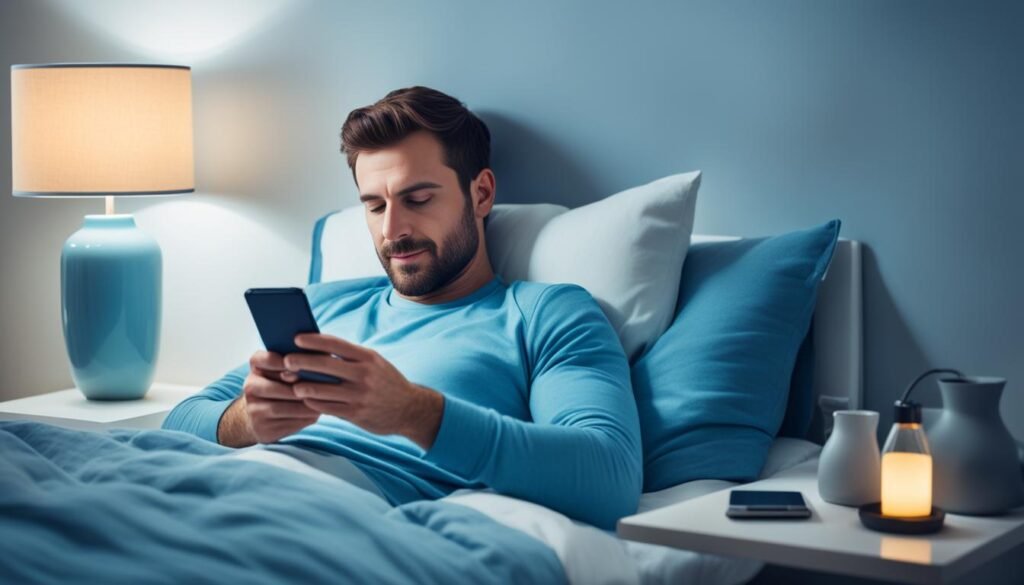
By incorporating these practical tips into your evening routine, you can reduce your exposure to blue light and improve your sleep patterns. Prioritizing good sleep hygiene is essential for your overall well-being and visual wellness.
Exploring the Relationship Between LED Lights and Digital Eye Strain
As our reliance on digital devices continues to grow, so does the prevalence of digital eye strain. This condition is characterized by symptoms such as eye fatigue, dryness, blurred vision, and headaches. One factor that has been linked to an increased risk of digital eye strain is the use of LED lights, particularly those emitted by screens and devices.
The bright and intense light emitted by LED screens can cause a range of eye discomforts when viewing for extended periods. The high contrast and flickering of LED lights can strain the eyes, leading to fatigue and dryness. Additionally, the blue light component of LED screens has been shown to disrupt sleep and disturb the natural circadian rhythm.
To prevent and manage digital eye strain caused by LED lights, it’s essential to take proactive measures:
- Adjust the display settings: Reduce the brightness level of your screen to a comfortable level, and adjust the contrast and color temperature settings to minimize eye strain.
- Take regular breaks: Follow the 20-20-20 rule, which suggests looking away from your screen every 20 minutes and focusing on an object at least 20 feet away for 20 seconds. This helps relax the eye muscles and reduces eye fatigue.
- Blink regularly: When focusing on a screen, people tend to blink less frequently, which can lead to dry and irritated eyes. Be conscious of blinking regularly to keep your eyes moist.
- Position your screen correctly: Place your screen at a comfortable distance, approximately 20-30 inches away from your eyes, and position it slightly below eye level. This reduces the strain on your eyes and minimizes the risk of neck and shoulder discomfort.
Addressing Myths: Can LED Lights Damage Your Retina?
There have been concerns and myths circulating about LED lights causing damage to the retina, the light-sensitive tissue in the back of the eye. This section will address these myths by examining scientific studies on the impact of blue light on retinal cells and assessing the actual risks of LED lights on human eyes.
By separating fact from fiction, we aim to provide a clear understanding of the potential risks associated with LED lights and retinal damage.
Studies on Blue Light and Retinal Damage
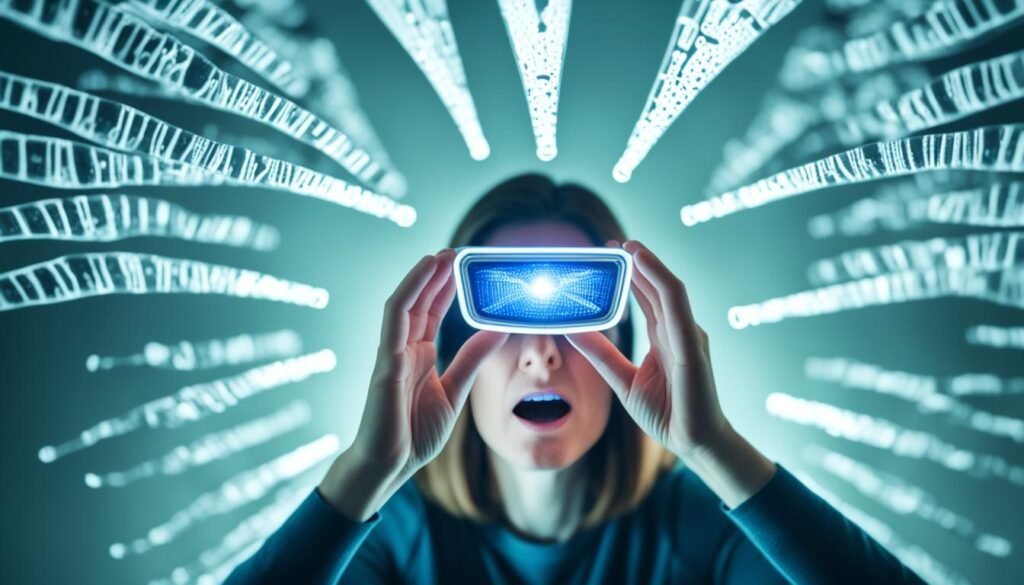
Scientific studies have been conducted to investigate the relationship between blue light, including that emitted by LED lights, and retinal damage. These studies have focused on examining the effects of blue light on retinal cells to determine whether it can cause harm. Researchers have observed that prolonged exposure to high-intensity blue light can lead to oxidative stress in the retina, potentially contributing to retinal degenerative diseases like age-related macular degeneration (AMD).
It is important to note that the studies conducted so far have primarily been performed on animals, such as rats and mice, or in laboratory settings using retinal cell cultures. While these studies provide valuable insights into the potential mechanisms of retinal damage, further research is necessary to fully understand the effects of blue light on the human retina.
Assessing the Real Risks in Human Eyes
When it comes to assessing the actual risks of LED lights on human eyes, it is crucial to consider several factors. These include the following:
- The intensity and duration of blue light exposure
- The proximity of the light source to the eyes
- Individual variations in eye health and susceptibility
While the blue light emitted by LED lights may contribute to eye strain and discomfort, the scientific evidence regarding significant retinal damage caused by LED lights in everyday use is currently limited. However, it is worth noting that minimizing cumulative exposure to high-intensity blue light, especially in vulnerable populations, such as individuals with pre-existing retinal conditions, may be beneficial.
As research in this field continues to evolve, it is important to stay informed about the latest findings and follow the recommendations of eye care professionals regarding blue light exposure and eye health.
Are LED Lights Bad For Your Eyes?
LED lights, particularly the blue light emitted by screens and devices, can have both positive and negative effects on our eyes. In this section, we will provide a comprehensive answer to the question: Are LED lights bad for your eyes? By examining scientific evidence and expert opinions, we aim to provide a balanced perspective on the impact of LED lights on eye health.
LED lights have become increasingly prevalent in our daily lives, with widespread usage in smartphones, computers, and lighting fixtures. While LED technology offers numerous benefits such as energy efficiency and longevity, concerns about their potential harm to our eyes have also emerged.
Scientific studies have shown that prolonged exposure to blue light, which is emitted by LED lights, can contribute to digital eye strain, sleep disturbances, and potential risks to retinal health. The blue light emitted by screens and devices can disrupt our sleep-wake cycle, suppress the production of melatonin (the hormone that regulates sleep), and cause eye discomfort, fatigue, and dryness.
However, it is worth noting that the harmful effects of LED lights on eye health can be mitigated by adopting proactive measures to reduce blue light exposure. Techniques such as using blue light filters or screen protectors, adjusting screen brightness and contrast, taking regular breaks from screen time, and maintaining proper distance and lighting conditions can help minimize these risks.
Ultimately, it is important to strike a balance between the benefits and risks associated with LED lights. By staying informed and implementing strategies to protect our eyes, we can minimize the potential negative effects and continue to enjoy the convenience and efficiency that LED technology offers.
Benefits and Concerns of Blue Light Exposure
While excessive exposure to blue light can have negative effects on our eyes and sleep patterns, it is important to recognize that blue light also has beneficial effects on our overall health. In this section, we will explore the potential benefits of blue light exposure, such as improving mood and cognitive function. However, we will also discuss when blue light exposure becomes a concern and how to strike a balance between the benefits and risks associated with blue light.
Beneficial Effects of Blue Light on Health
Blue light plays an essential role in regulating our circadian rhythm, which influences our sleep-wake cycle. Exposure to natural blue light during the day helps maintain our internal biological clock and promotes alertness and productivity. Additionally, blue light has been found to enhance mood, improve cognitive performance, and boost overall well-being.
In recent years, researchers have also discovered that blue light therapy can be used as a treatment for certain conditions, such as seasonal affective disorder (SAD), which is characterized by depression during the winter months.
Furthermore, a study conducted by the University of Edinburgh found that blue light exposure can increase the production of nitric oxide in the body, resulting in lower blood pressure levels. This suggests that blue light exposure may have cardiovascular benefits as well.
When Does Blue Light Exposure Become a Concern?
While the benefits of blue light are notable, it is crucial to be aware of when blue light exposure becomes a potential concern. The primary concern arises from the prolonged and excessive exposure to blue light, particularly at night.
Excessive exposure to blue light in the evening or before bedtime can disrupt our sleep patterns by suppressing the production of melatonin, the hormone that regulates sleep. This can lead to difficulties falling asleep and poor sleep quality, which can have negative impacts on overall health and well-being.
In addition, studies have suggested that prolonged exposure to blue light, especially from electronic devices like smartphones and computers, may contribute to digital eye strain. This can result in symptoms such as eye fatigue, dryness, blurred vision, and headaches.
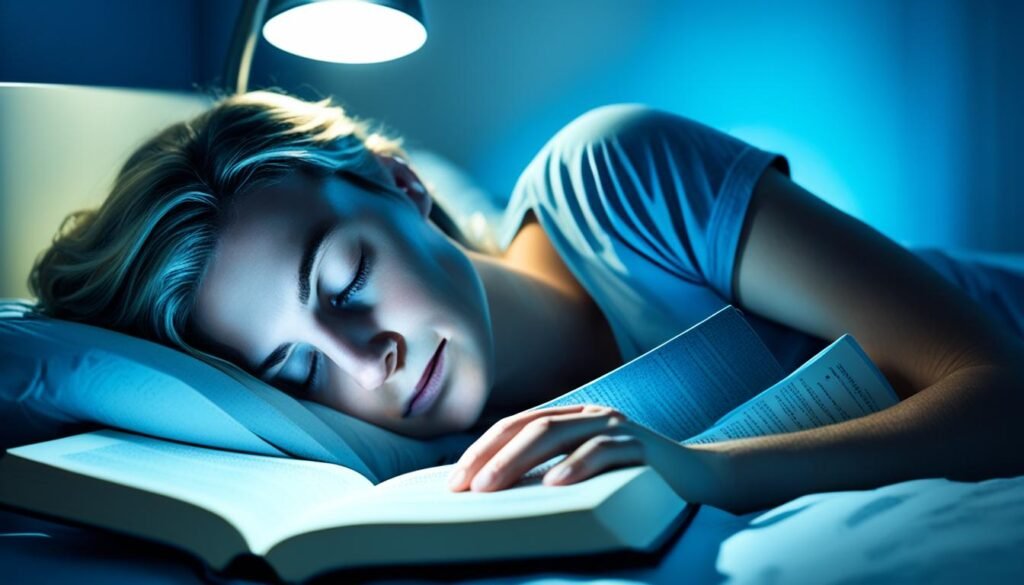
It is important to strike a balance between the benefits and risks associated with blue light exposure. Implementing measures to reduce excessive exposure to blue light, such as using blue light filters on devices, taking regular breaks from screens, and minimizing electronic device usage before bedtime, can help mitigate potential concerns.
Proactive Eye Care: Techniques to Mitigate the Effects of Blue Light
With the increasing prevalence of LED technology and its impact on eye health, it is crucial to take proactive measures to reduce blue light exposure and protect your eyes. By implementing the following techniques and tips, you can optimize your visual wellness in the digital age:
1. Adjust Display Settings: Modify the brightness and color temperature settings on your screens to reduce blue light emission. Lowering the brightness and switching to warm color tones can help minimize eye strain.
2. Use Screen Filters: Apply screen protectors or install software filters that block or reduce blue light. These filters can help mitigate the impact of blue light on your eyes and optimize your visual comfort.
3. Take Regular Breaks: Give your eyes regular breaks by following the 20-20-20 rule. Every 20 minutes, look away from your screen and focus on an object at least 20 feet away for 20 seconds. This technique helps reduce eye strain and prevent digital eye fatigue.
4. Use Proper Lighting: Ensure that your workspace or room has appropriate lighting conditions. Avoid excessive brightness and minimize glare by positioning your screens away from direct light sources, such as windows.
5. Wear Blue Light Filtering Glasses: Consider using glasses with lenses that filter out blue light. These specialized glasses can help reduce the amount of blue light that reaches your eyes, providing additional protection.
6. Establish a Bedtime Routine: Limit your exposure to blue light in the evening to support better sleep. Avoid using electronic devices at least one hour before bedtime and opt for activities that promote relaxation, such as reading a book or practicing meditation.
7. Create a Blue Light-Free Environment: Make your bedroom a sanctuary free from blue light by using blackout curtains or blinds to block external light sources. This creates a conducive environment for restful sleep and supports overall eye health.
By incorporating these proactive measures into your daily routine, you can significantly reduce blue light exposure and safeguard your eye health. Remember, taking care of your eyes is essential in our technology-driven world.
Conclusion
In conclusion, LED lights, particularly blue light emitted by screens and devices, can have both positive and negative effects on our eyes. While excessive exposure to blue light can contribute to digital eye strain, sleep disturbances, and potential risks to retinal health, it is important to consider the benefits and adopt proactive measures to protect our eyes.
By being aware of the sources of blue light and implementing strategies to reduce exposure, we can maintain healthy eyes in the digital age.
Blue light, although naturally emitted by the sun, is also produced by artificial sources such as LED screens and lighting. While it plays a vital role in regulating our sleep-wake cycle and enhancing our mood and alertness, prolonged and excessive exposure can lead to adverse effects on our eyes and sleep patterns.
To mitigate the potential risks associated with LED lights and blue light exposure, it is crucial to prioritize eye care. Simple steps, such as reducing screen time, adjusting screen brightness, using screen filters or blue light-blocking glasses, and creating a sleep-friendly environment with proper lighting, can significantly lower the impact of blue light on our eyes and overall well-being.
Check out our FREE Calculators on our Resources Page
Source Links
- https://insighteyeok.com/blue-light-exposure-what-is-it/
- https://insighteyeok.com/articles/article-32-dangers-of-blue-light-from-technology-and-how-to-filter-it/
- https://www.aao.org/eye-health/tips-prevention/digital-devices-your-eyes

